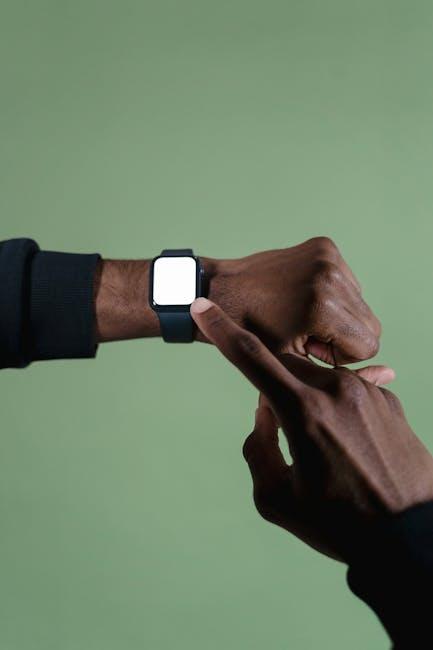In an age where our lives unfold as streams of data, artificial intelligence has quietly stepped in as both guardian and observer of our digital well-being. From monitoring screen time to analyzing online behavior, AI technologies are learning to recognize patterns that hint at our mental and emotional health in the virtual realm. But how exactly does this invisible digital companion track our wellness, and what does it mean for our relationship with technology? This article delves into the subtle ways AI measures and manages our digital habits, revealing the promise and complexity behind a smarter, more mindful digital experience.
Understanding Digital Wellness in the Age of AI

As artificial intelligence becomes increasingly embedded in our daily lives, it quietly monitors various facets of our digital behavior to gauge our overall wellbeing. AI algorithms analyze patterns such as screen time, app usage frequency, and the nature of interactions on social platforms to paint a detailed picture of our digital habits. By assessing factors like sleep disruption caused by late-night screen exposure or stress levels inferred from interaction intensity, AI can offer tailored suggestions aimed at fostering healthier digital routines.
Key elements AI tracks to manage your digital wellness include:
- Time spent on different types of applications (social media, work, entertainment).
- Frequency and timing of device usage, highlighting peak engagement periods.
- Interaction patterns, including communication tone and response delays.
- Notifications received vs. notifications acted upon, indicating distraction levels.
| Metric | What It Indicates | AI Insight Example |
|---|---|---|
| Screen Time | Overall device dependency | Suggests scheduled phone-free hours |
| App Diversity | Balance between productivity and leisure | Recommends limiting social media if skewed |
| Interaction Tone | Mood and emotional health signals | Flags potential stress or burnout |
How AI Monitors Screen Time and Online Behavior

AI-powered tools utilize advanced algorithms to continuously scan and analyze your interactions across devices, providing real-time insights into your digital habits. These systems monitor the duration spent on various apps, websites, and platforms, and then interpret patterns to identify potential overuse or addictive behavior. By recognizing spikes in screen time or frequent app switching, AI can subtly suggest breaks or promote healthier usage. The technology leverages data points such as:
- App usage frequency and duration
- Time of day activity patterns
- Content engagement levels
- Notification response behavior
Furthermore, AI doesn’t just track time-it analyzes the quality of your engagement. For example, it can differentiate between passive scrolling and active, purposeful interaction, tailoring feedback accordingly. Here’s a simplified comparison of two behavioral profiles AI might recognize:
| Behavior Aspect | Passive User | Active User |
|---|---|---|
| Average Session Length | 10 minutes | 30 minutes |
| Content Interaction | Low (scrolling only) | High (clicks, comments) |
| Break Frequency | Rare | Regular |
By making these distinctions, AI helps users gain a nuanced understanding of their digital wellness, empowering better control and proactive changes to online habits.
The Role of AI in Managing Mental Health and Stress

Artificial Intelligence has transformed how we understand and support mental health by offering real-time insights into our emotional well-being. Advanced algorithms analyze patterns from smartphones, wearables, and social media activity to detect subtle signs of stress, anxiety, and mood shifts before they escalate. Through continuous monitoring, AI acts as a personal wellness companion, providing tailored recommendations that help individuals manage their mental state proactively. This digital mindfulness is achieved without intruding on privacy, ensuring that users maintain control over their data while benefiting from intelligent support.
Key benefits include:
- Personalized stress alerts: Users receive notifications when their stress levels spike, along with practical coping strategies.
- Emotion tracking: AI tools map mood fluctuations using voice tone, text sentiment, and physiological signals such as heart rate.
- Behavioral insights: Recommendations adapt based on patterns in sleep, physical activity, and social interaction.
| AI Feature | Function | Impact on Wellbeing |
|---|---|---|
| Sentiment Analysis | Monitors language use and tone | Detects early signs of low mood |
| Wearable Sensors | Tracks heart rate variability | Identifies stress spikes |
| Digital Journaling | Encourages mindful reflection | Supports emotional regulation |
Practical Tips for Balancing Technology Use with AI Insights

Striking a healthy balance between technology use and AI-generated insights requires intentional habits and mindfulness. Start by setting clear boundaries for screen time, using AI tools not just to monitor your usage but also to recommend optimal breaks tailored to your behavior. Incorporate regular digital detoxes where you disengage entirely, allowing your brain to reset and reducing the risk of cognitive overload. Additionally, prioritize apps that offer transparency about data collection and empower you to customize notifications rather than allowing algorithmic settings to dictate your day.
Consider implementing a few practical strategies to maintain equilibrium:
- Schedule tech-free zones in your home, creating moments of uninterrupted offline connection.
- Leverage AI-driven summaries to quickly digest crucial information instead of aimlessly scrolling through endless feeds.
- Use visual analytics dashboards provided by wellness apps to track patterns in your device usage and mood correlations.
| Tip | Benefit |
|---|---|
| Timed Focus Sessions | Boosts productivity and reduces burnout |
| Notification Management | Limits distractions and improves concentration |
| Evening Screen Cut-off | Enhances sleep quality and mental clarity |
Closing Remarks
As we continue to weave technology deeper into the fabric of our daily lives, AI’s role in monitoring and shaping our digital wellness becomes ever more significant. By silently analyzing patterns, offering personalized insights, and nudging us toward healthier habits, these intelligent systems hold the promise of a more balanced digital experience. Yet, as with any tool that collects our data and interprets our behavior, it invites us to be thoughtful about privacy and control. In the evolving dance between human intuition and artificial intelligence, the ultimate goal remains clear: harnessing technology not to dominate our digital lives, but to enhance our well-being within them.











